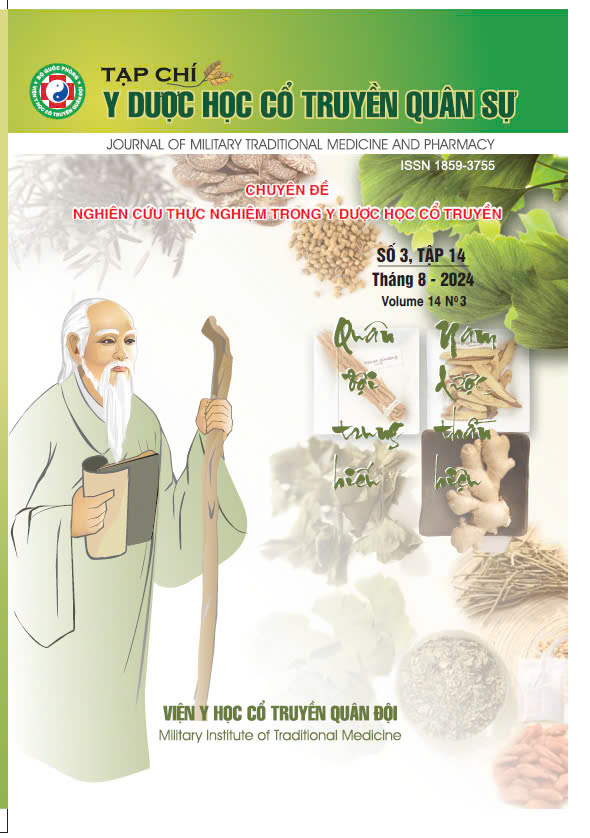NGHIÊN CỨU TÁC DỤNG GIẢM HO VÀ LONG ĐỜM CỦA CHANH GỪNG ĐƯỜNG PHÈN TRÊN THỰC NGHIỆM
Main Article Content
Abstract
The study aimed to evaluate acute toxicity, antitussive and expectorant activities of “Chanh gung duong phen” in the experiment. The antitussive effect of “Chanh gung duong phen” liquid extract was measured using a murine model of ammonia-induced cough. The expectorant effect of “Chanh gung duong phen” liquid extract was evaluated by measuring mice's tracheal phenol red output. “Chanh gung duong phen” liquid extract at both doses of 12 mL/kg and 24 mL/kg significantly inhibited the cough frequency, increased the inhibition of cough, and tended to increase the latent period of cough. In terms of expectorant effect, “Chanh gung duong phen” at the dose of 12 mL/kg tended to enhance mice's tracheal phenol red output while “Chanh gung duong phen” at the dose of 24 mL/kg significantly improved mice's tracheal phenol red output as compared with the control group. In conclusion, “Chanh gung duong phen” was a product derived from herbal medicine, and posed remarkable antitussive, expectorant effects in the experiment.
Article Details
Keywords
“Chanh gung duong phen”, acute toxicity, antitussive, expectorant.
References
2. Yu P, Cheng S, Xiang J, et al. "Expectorant, antitussive, anti-inflammatory activities and compositional analysis of Aster tataricus". J Ethnopharmacol. 2015;164:328-333. doi:10.1016/j.jep.2015.02.036
3. Prevalence and attributable health burden of chronic respiratory diseases, 1990–2017: a systematic analysis for the Global Burden of Disease Study 2017. Lancet Respir Med. 2020;8(6):585-596. doi:10.1016/S2213-2600(20)30105-3
4. Kraft K. "The importance of herbal antitussives and expectorants". Pharm Unserer Zeit. 2008;37(6):478-483. doi:10.1002/pauz.200800287
5. Maksoud S, Abdel-Massih RM, Rajha HN, et al. Citrus aurantium L. Active Constituents, Biological Effects and Extraction Methods. An Updated Review. Molecules.
2021;26(19):5832. doi:10.3390/molecules26195832
6. Bera K, Nosalova G, Sivova V, Ray B. Structural Elements and Cough Suppressing Activity of Polysaccharides from Zingiber officinale Rhizome. Phytother Res PTR. 2016;30(1):105-111. doi:10.1002/ptr.5508
7. Hock FJ. Drug Discovery and Evaluation: Pharmacological Assays, Fourth Edition.; 2015:4314. doi:10.1007/978-3-319-05392-9
8. Plevkova J, Brozmanova M, Matloobi A, Poliacek I, Honetschlager J, Buday T. Animal models of cough. Respir Physiol Neurobiol. 2021;290:103656. doi:10.1016/j.resp.2021.103656
9. Hu JR, Jung CJ, Ku SM, Jung DH, Ku SK, Choi JS. Antitussive, expectorant, and anti-inflammatory effects of Adenophorae Radix powder in ICR mice. J Ethnopharmacol. 2019;239:111915. doi:10.1016/j.jep.2019.111915
10. Gairola S, Gupta V, Bansal P, Singh R, Maithani M. Herbal antitussives and expectorants - A review. Int J Pharm Sci Rev Res. 2010;5:5-9.


